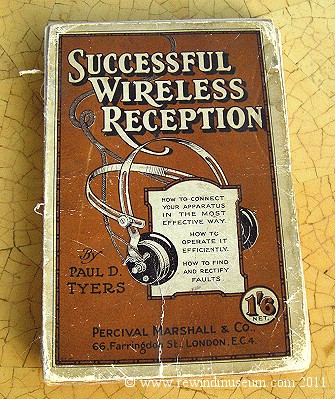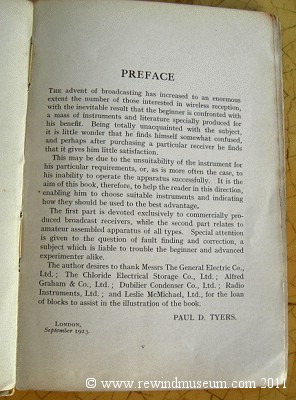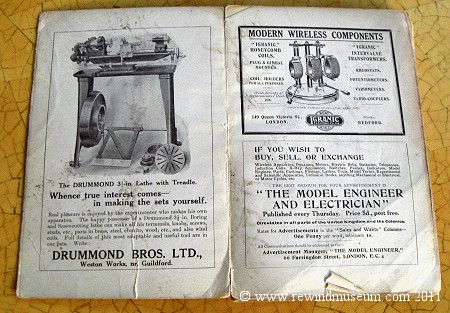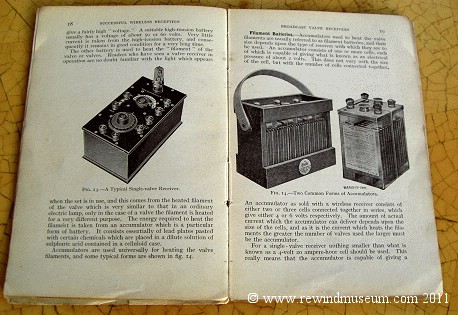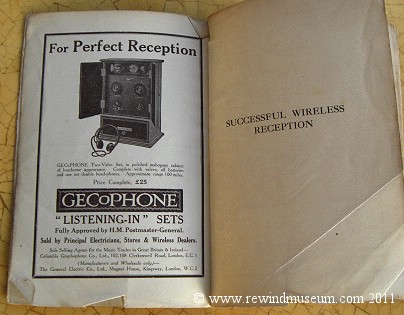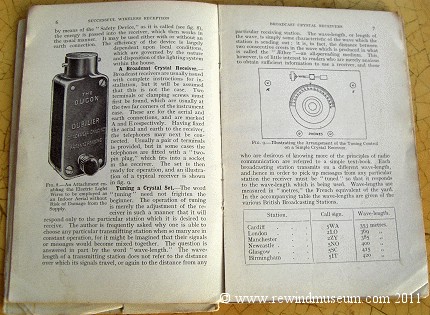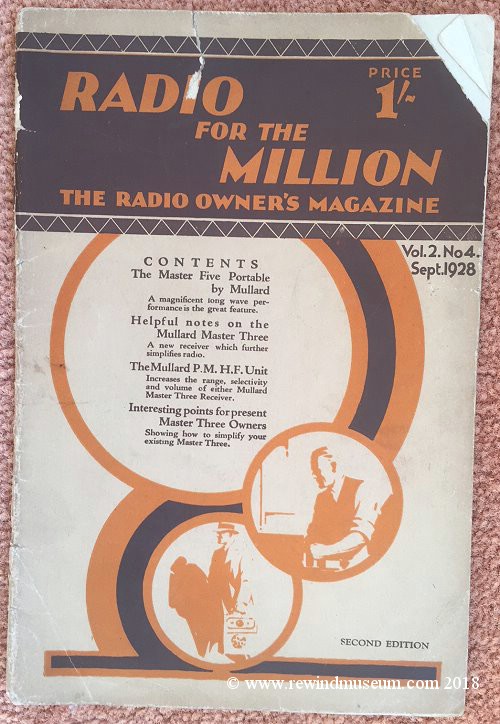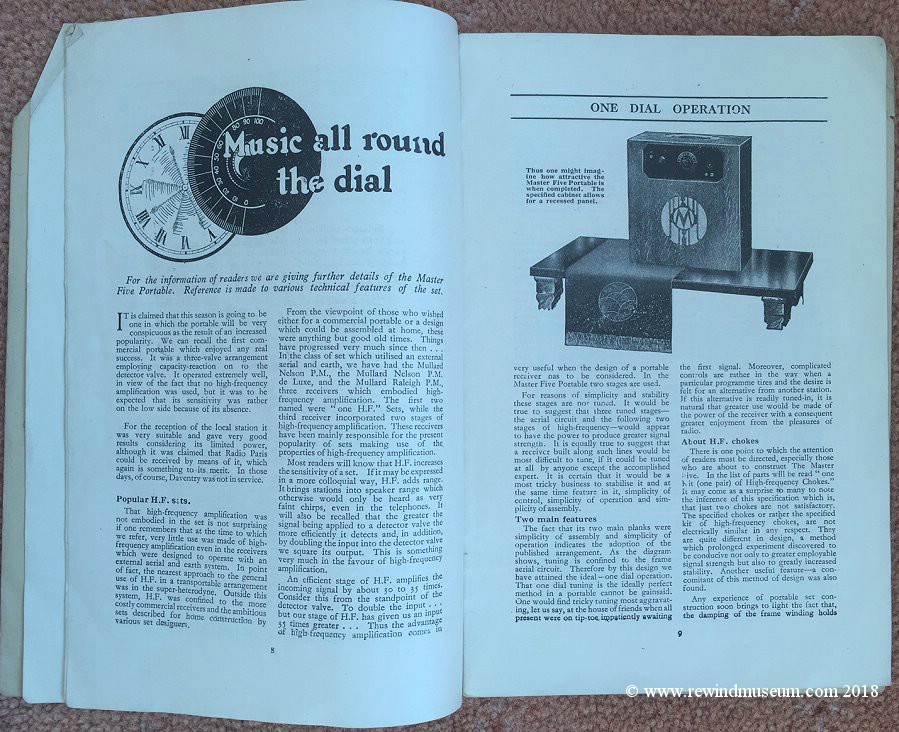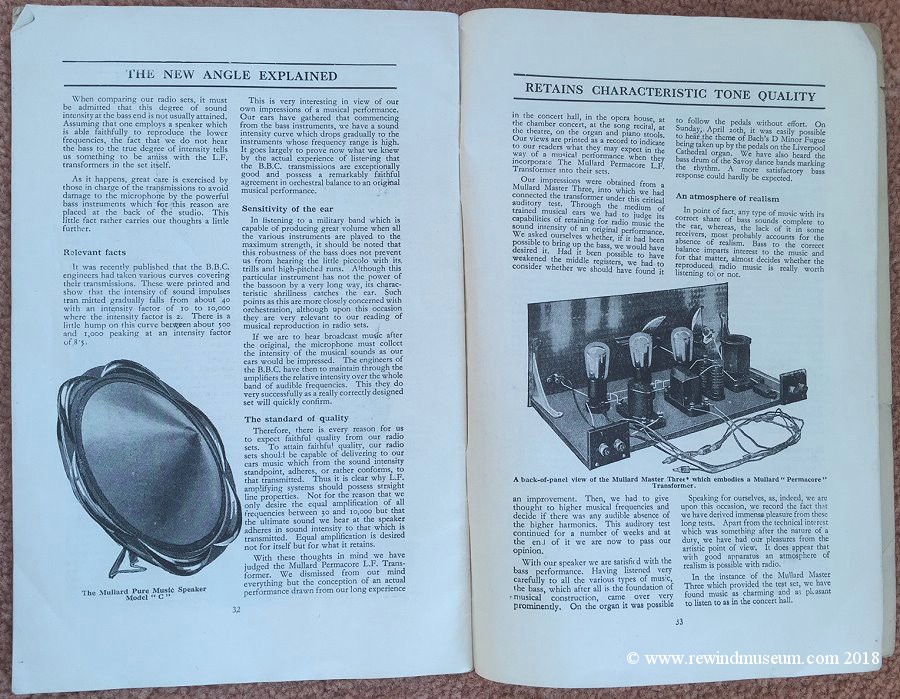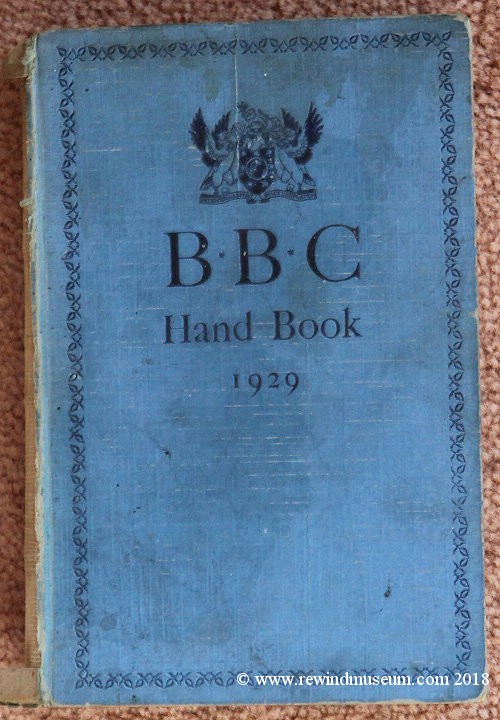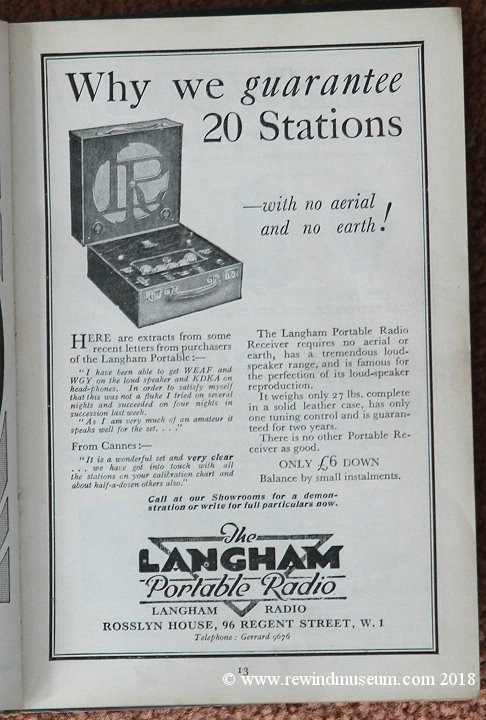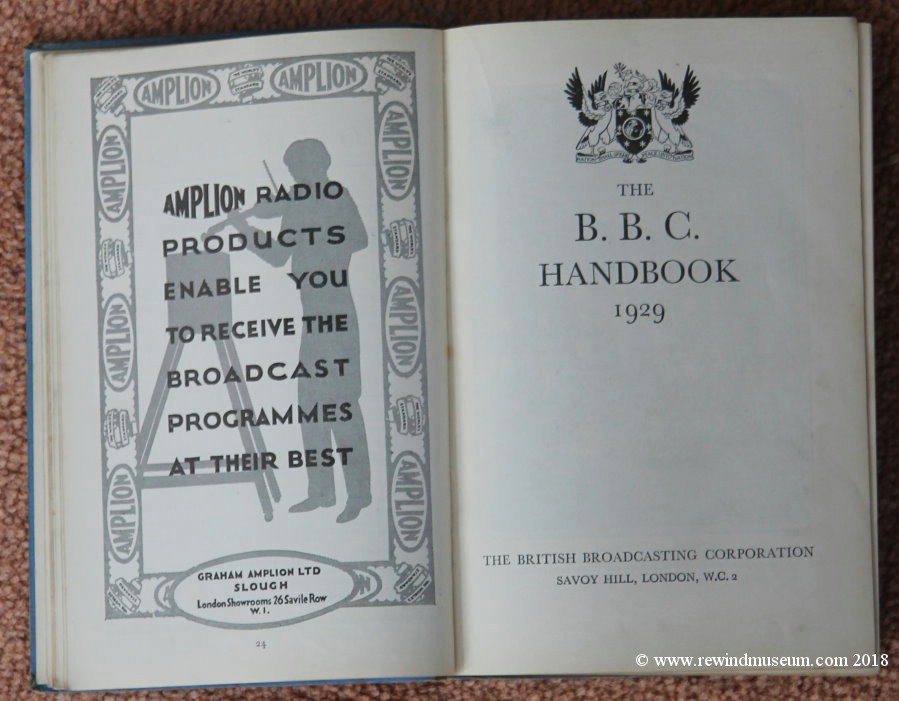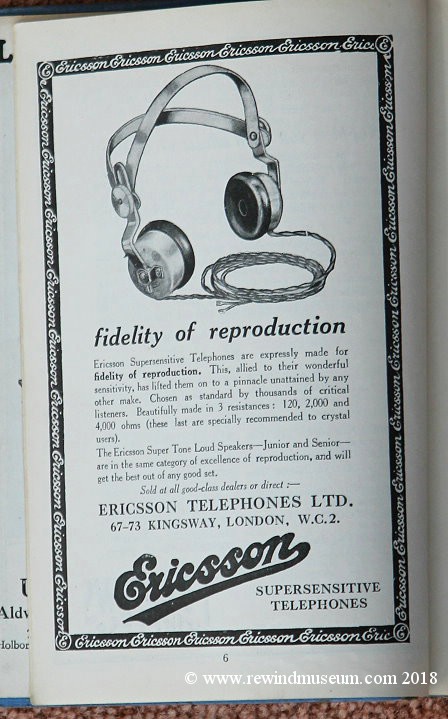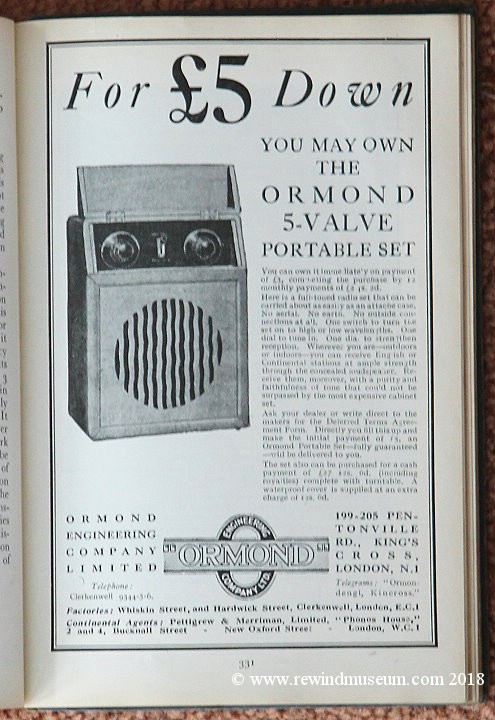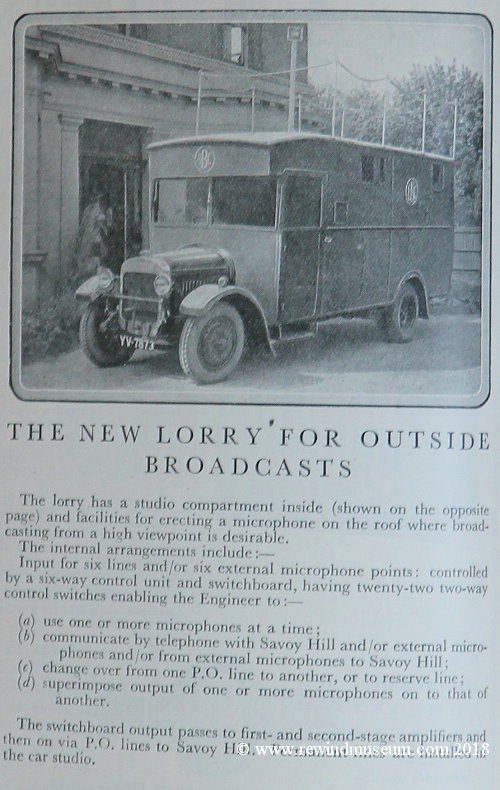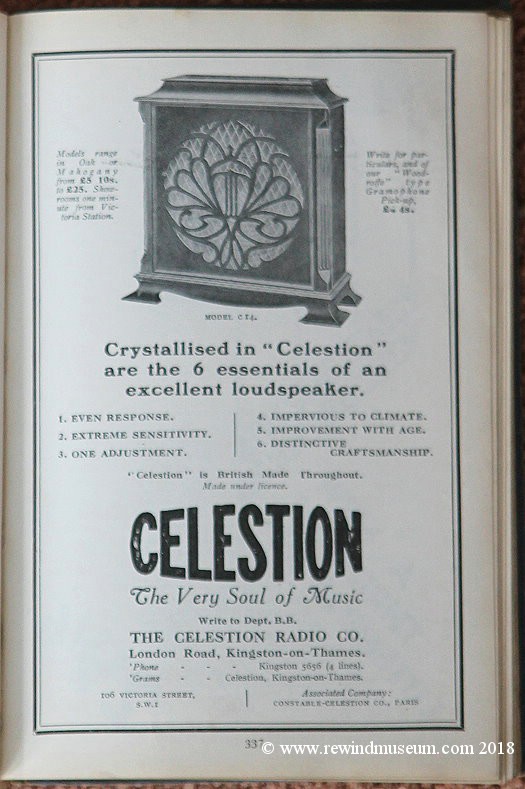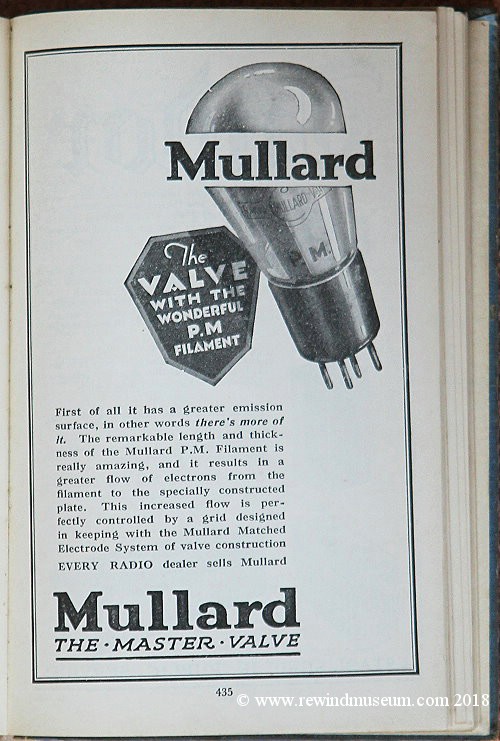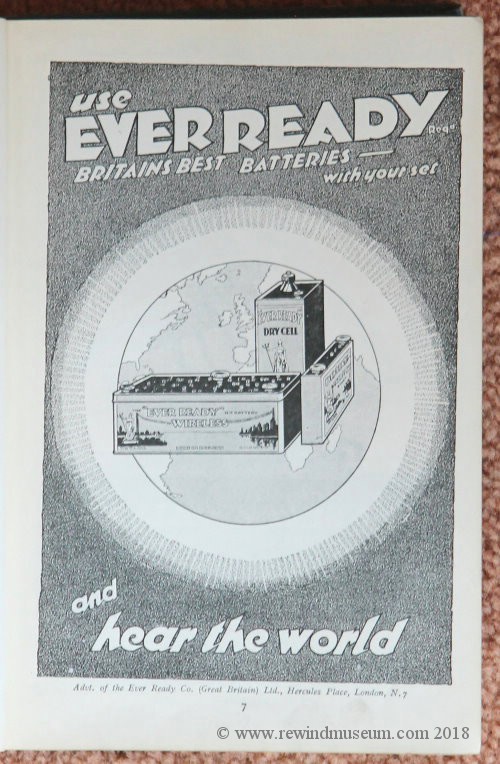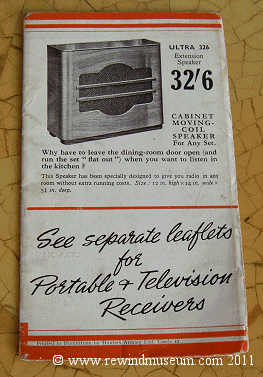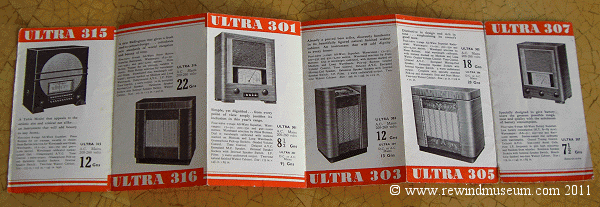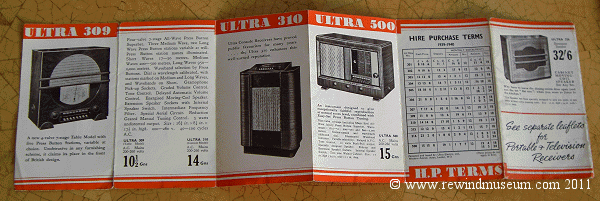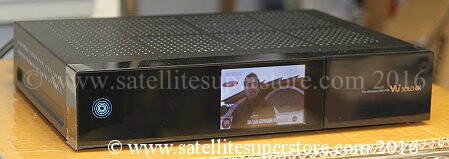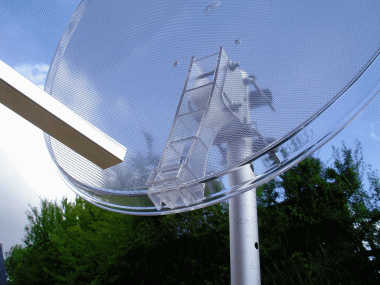Museum of early consumer electronics and 1st achievements
www.rewindmuseum.com
1920. The Model Engineer magazine. August 1920.
Our oldest publication which includes radio.
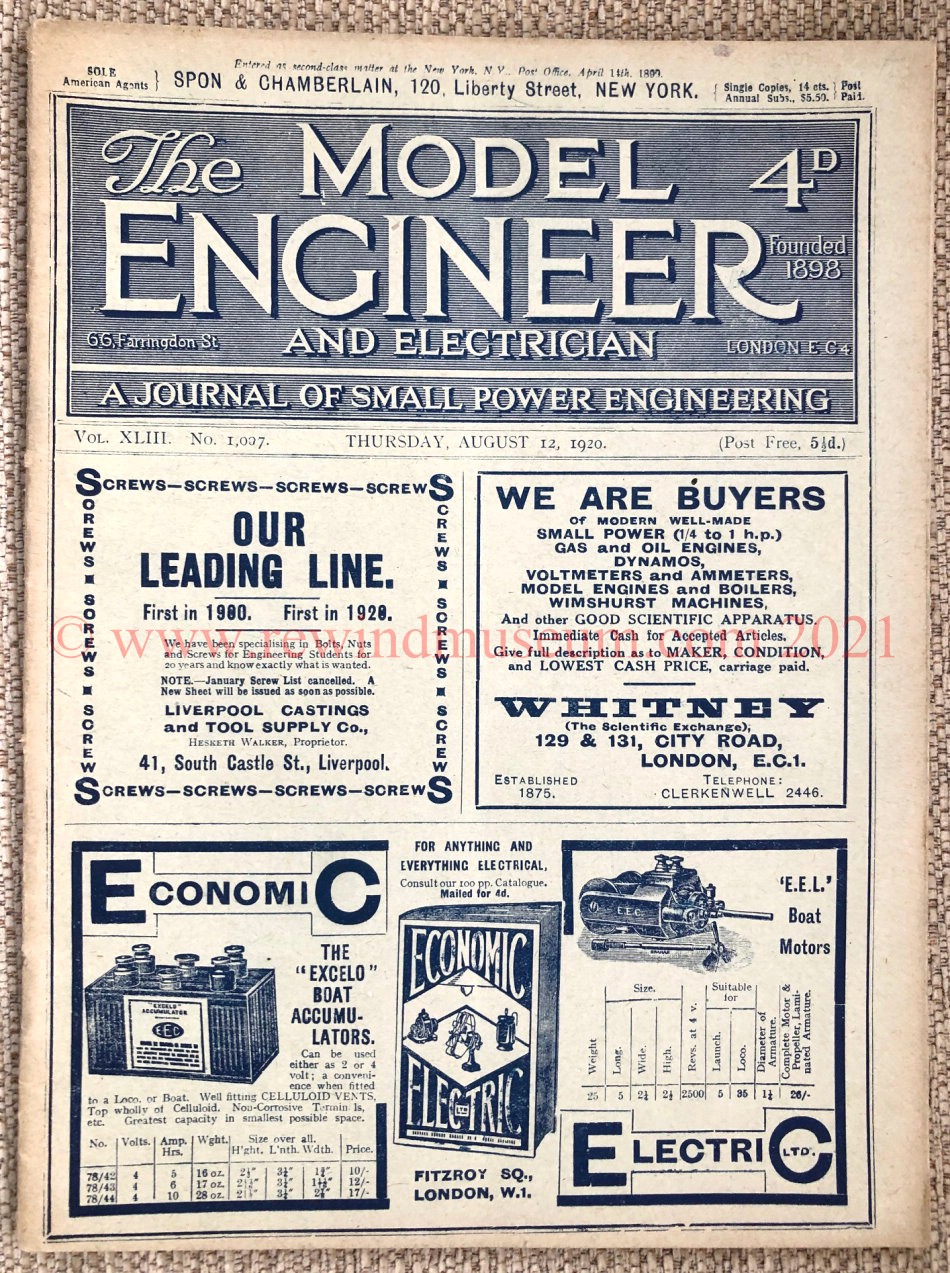
Below you can see adverts from this magazine and one if for a built it yourself radio.
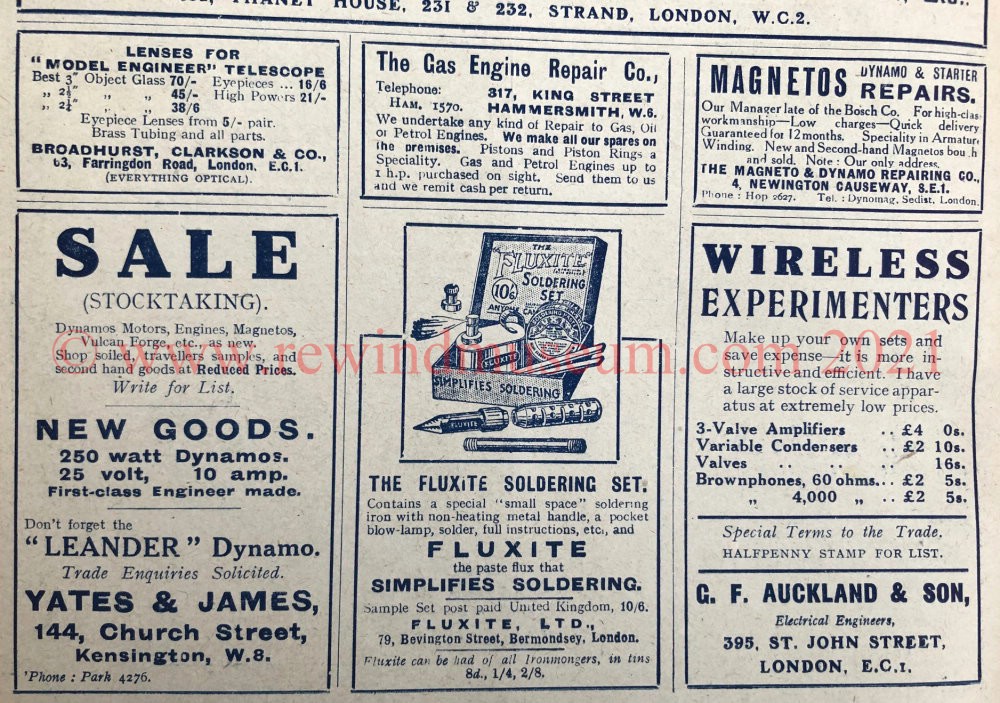
Here you can see a 3-valve radio for £4.00. That would be equivalent to £185.00 in 2021 allowing for
100 years of inflation, however, that does not really give the whole story. In 1920, the average
unskilled wage was £2.00. Semi skilled £3.00 - £4.00 and skilled £4.00 - £5.00 therefore a DIY build
your own radio (which would work from batteries) is more than a weeks wage for most people.
See the August 1920 issue of "The Model Engineer" magazine
here.



Capt. P.P. Eckersley's Query Handbook. Estimated - 1931.
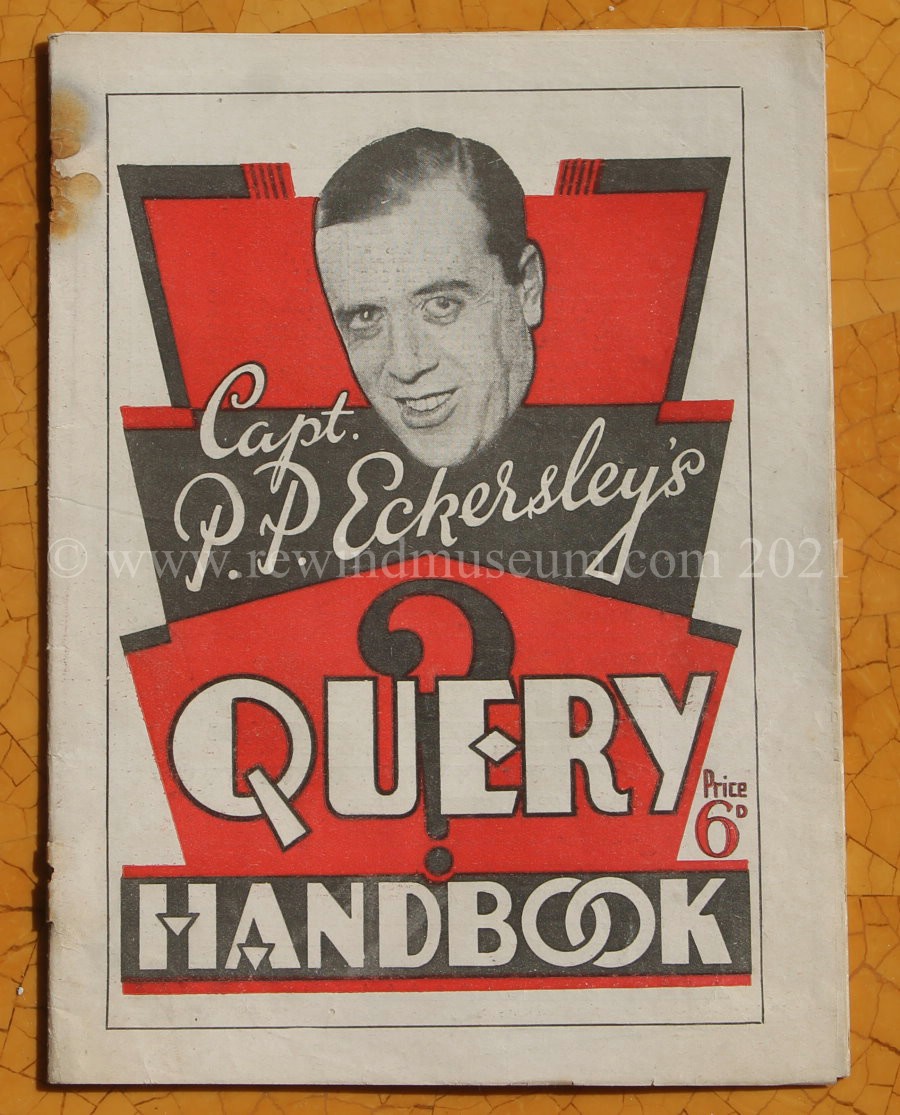
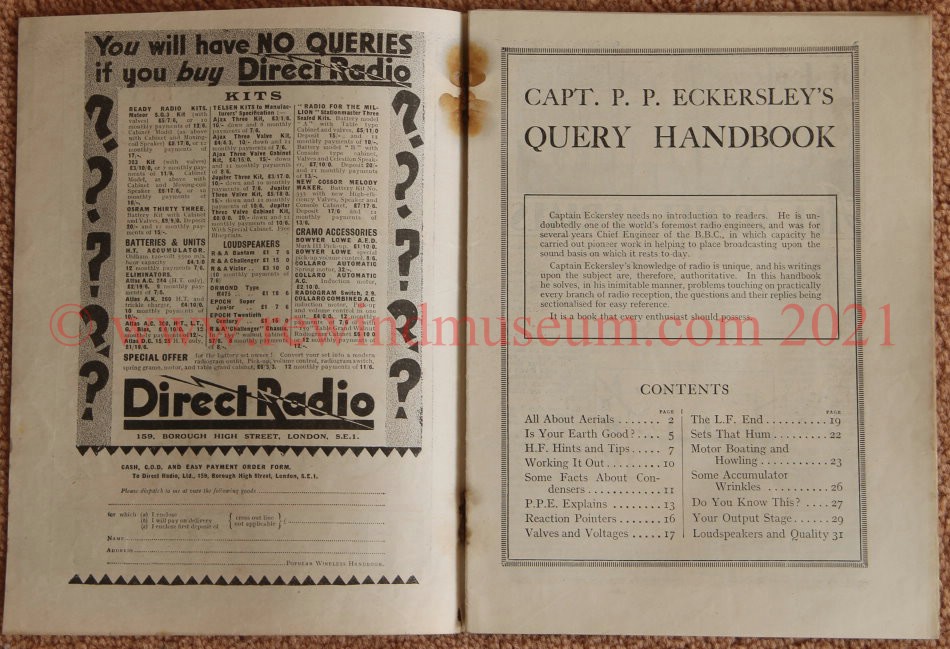
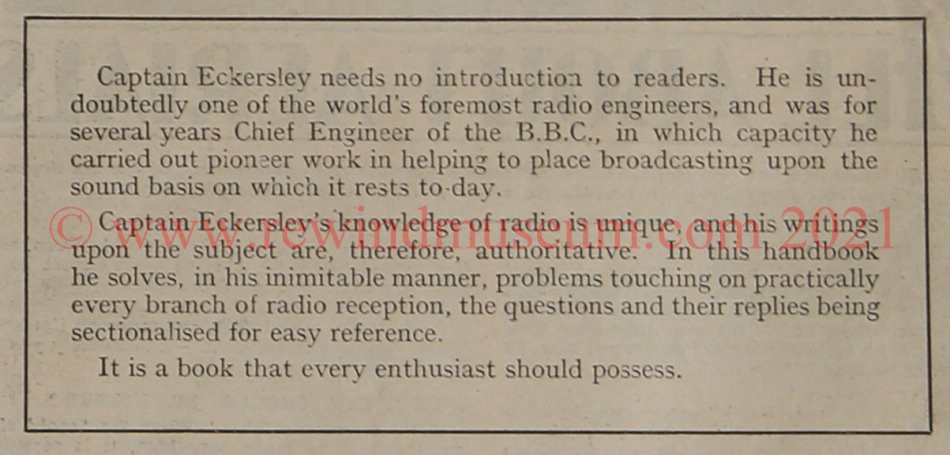
Capt. P.P. Eckersley was the chief engineer at the BBC from 1922 to 1927. In 1930 he married Dorothy Clark who was
a supporter of the pre-war fascist party. Through his wife he also knew the fascists William Joyce and Oswald Mosley.
In the first World War was he was in "The Royal Flying Corp." as a wireless equipment officer and he became a Captain.
Later in the first World War, he was sent to the Wireless Experimental Station at Biggin Hill where he worked on
"duplex telephony" for aircraft. In the 1930s was involved in the building of a broadcasting station in
continental Europe which could be received in the U.K. He separated from his wife in 1939, She stayed
in Germany during the war and helped the Nazis. She was tried at Nuremberg and spent a year in
prison after the war. He stayed in the U.K. during the war.
He wrote a number of publications - in 1925 he wrote a book - "All About Your Wireless Set".
His involvement with monthly magazines seems to have been in the early 1930s. He contributed to "Popular Wireless"
magazine and was featured on the front cover in January 1931. He was the "Radio-Consultant-In-Chief" of
"The Wireless Constructor" magazine as shown on the front cover in February 1931. He was also a regular
contributor to "Popular Wireless" as shown
below in the Oct. 1932 edition.
This "Capt. P.P. Eckersley's Query Handbook" refers to the fact he used to work for the BBC and so it has to be
after 1927. Also the cover price of 6D (6 old pence) is the same price as the cover price of the February 1931
"Wireless Constructor" magazine and is written in a similar style. It would be fair to date it on or around 1931.

Popular Wireless. Oct. 1932
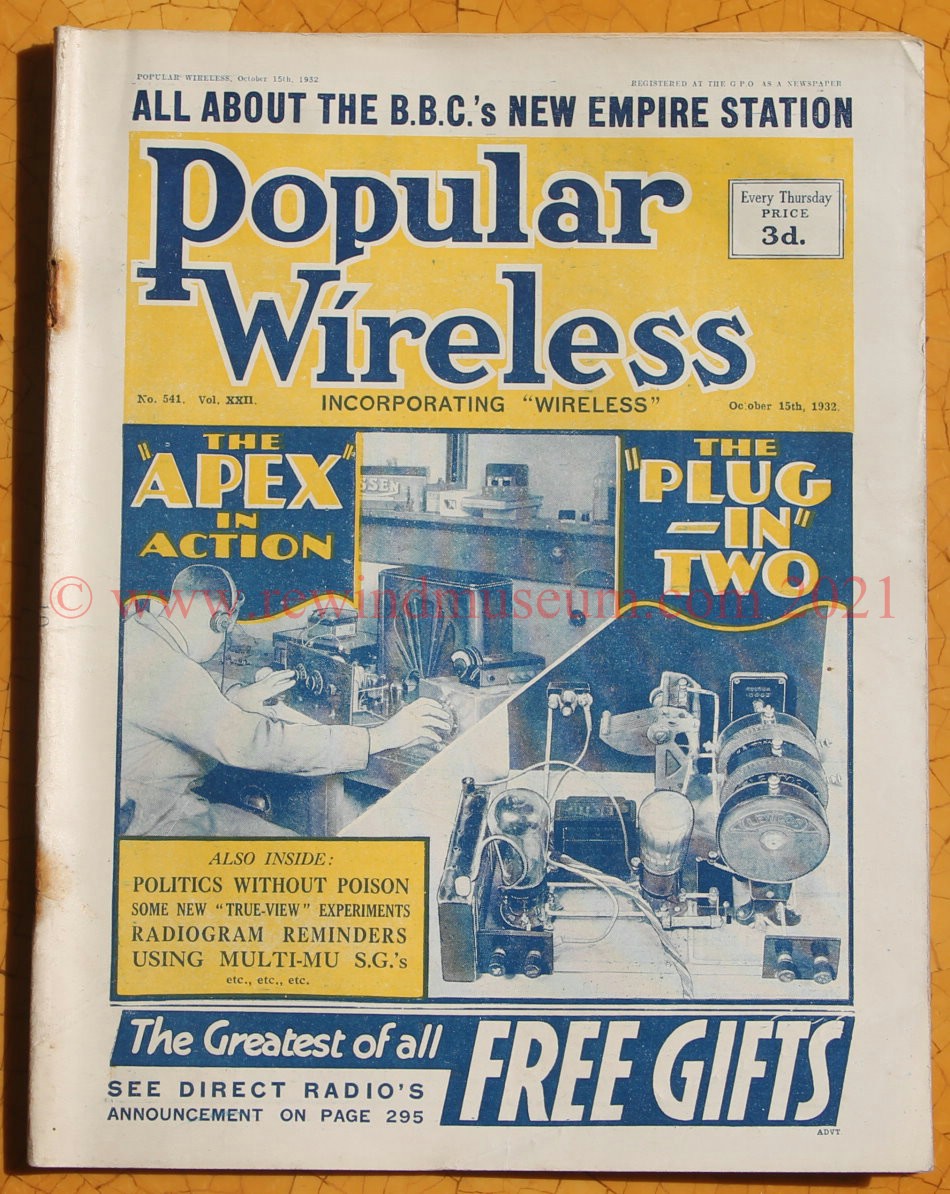
Capt. P.P. Eckersley's Query Corner. More about Capt. Eckersley
above.
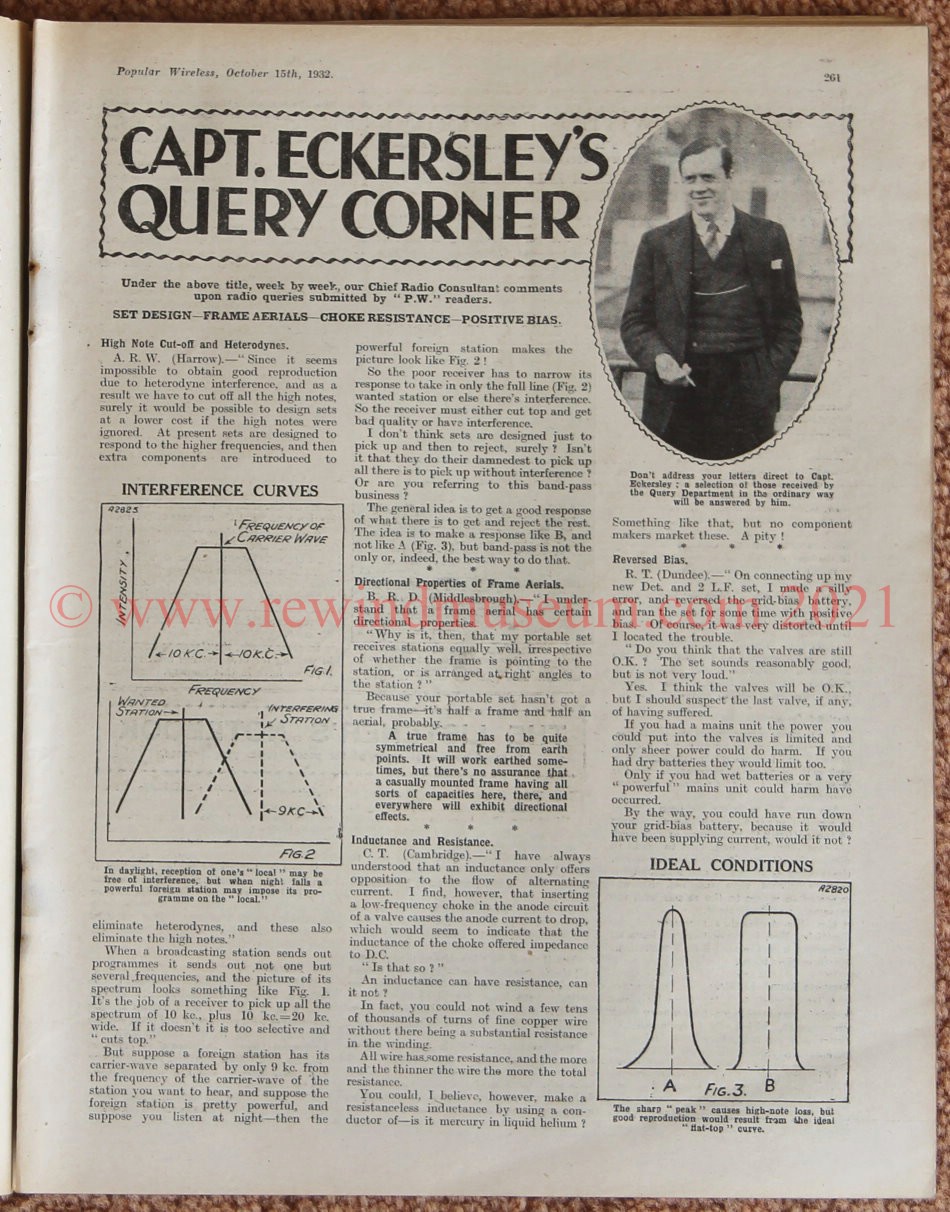

Popular Wireless. 1933 and 1934
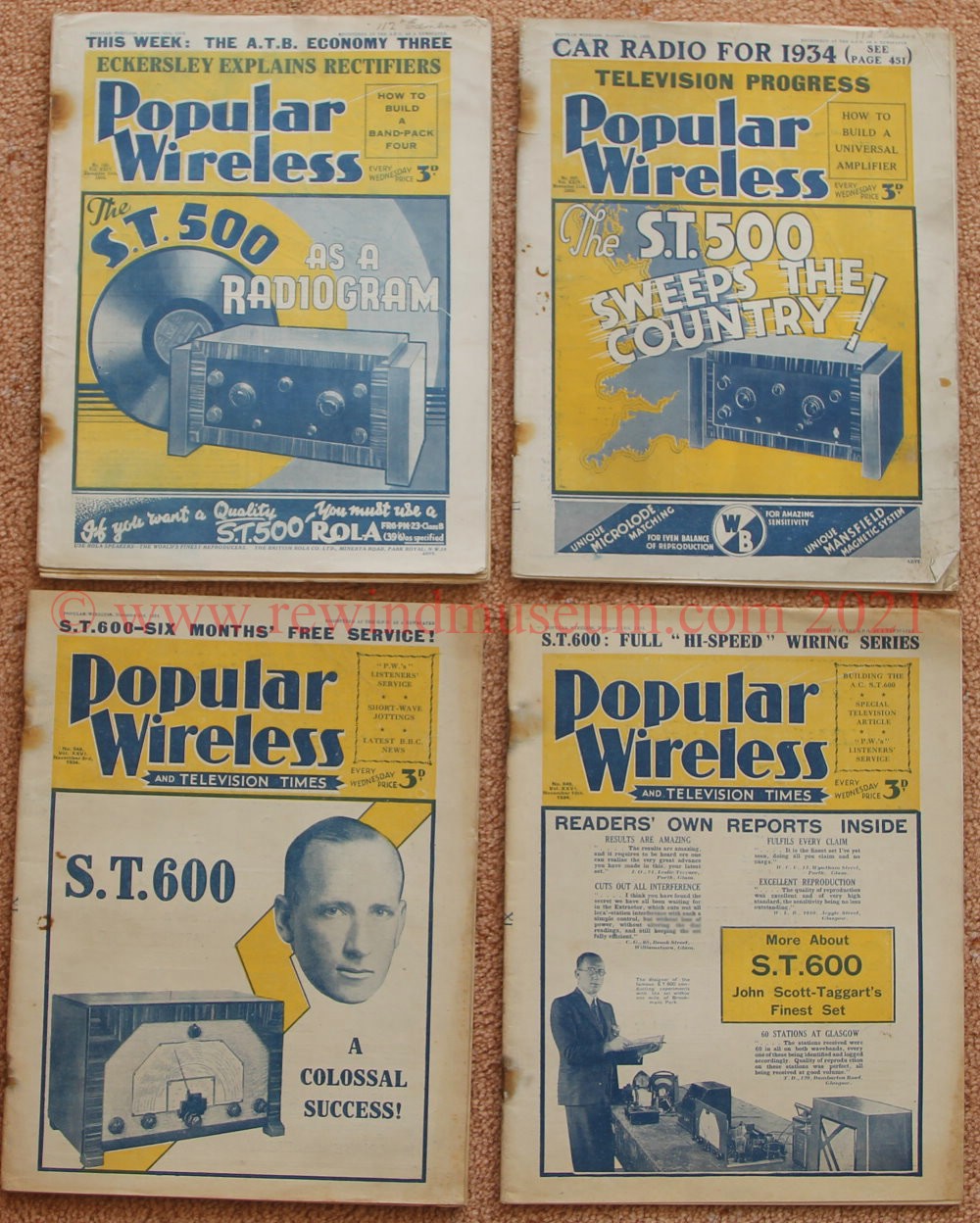
Top left Nov. 1933, Top right, Nov 1933. Bottom left Nov. 1934 bottom right Nov. 1934.
Note The lower two magazines above from 1934 say "Popular Wireless and Television Times", however,
there is no mention of "Television" in the two upper magazine titles from 1933. One of the 1933
Popular Wireless magazines above does, however, say "Television Progress".
Also featured are the S.T.500 and S.T.600 "receivers" (radio / amplifiers).
On the front cover "John Scott-Taggart" "The designer of the famous S.T.600"
The S.T.600 is one of the first ever receivers to work from mains electricity rather than batteries.
Also stated - "a customer puts the S.T500 into a Peto Scott cabinet. No doubt similar to the one
below"
Wing-Commander John Scott-Taggart was a British radio engineer who served in both World Wars. He
was a technical expert in radio and later in radar. Between the 2 wars he became a leading technical
writer in magazines and books on radio designs. He was famous for his home constructor designs for
the home constructor market. In those days, there were few "off the shelf" radios and amplifiers
in shops and home construction was the most common way the public ended up owning a set.

Peto Scott brochure and letter both from 1936.
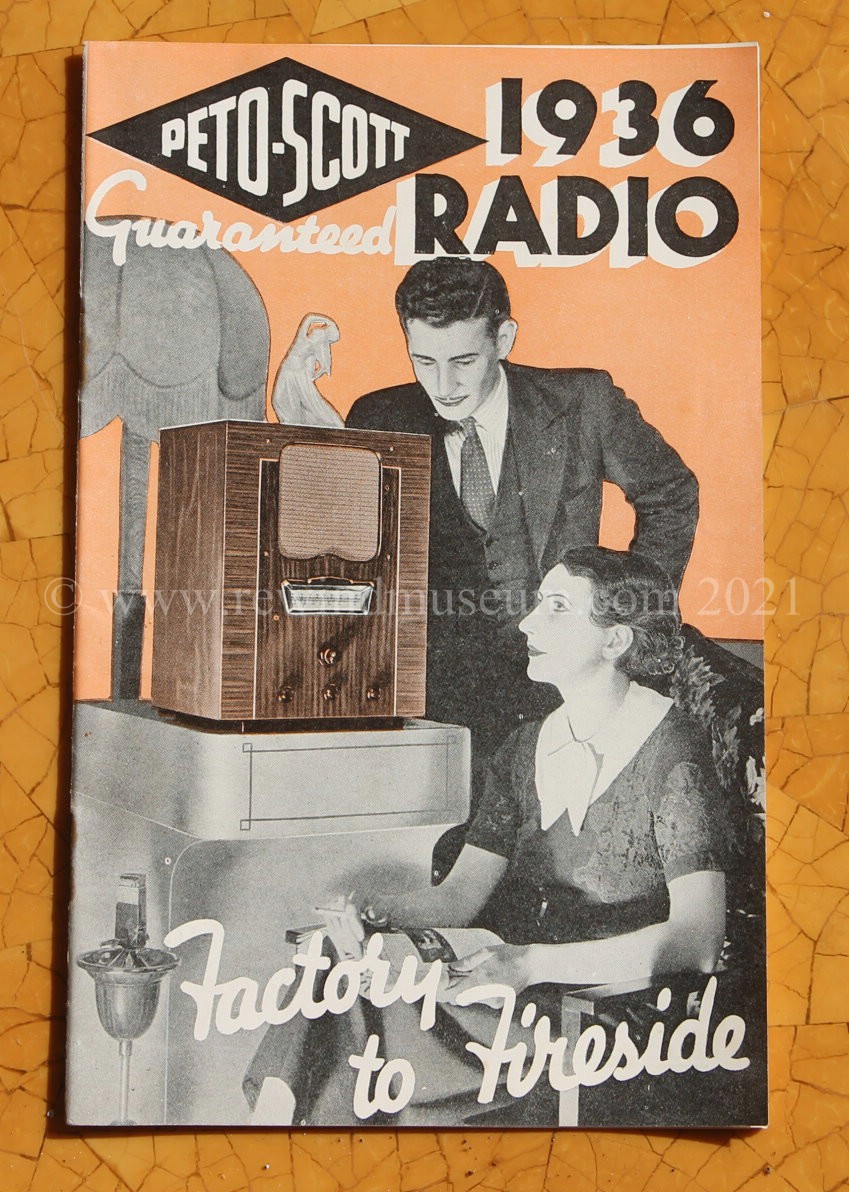
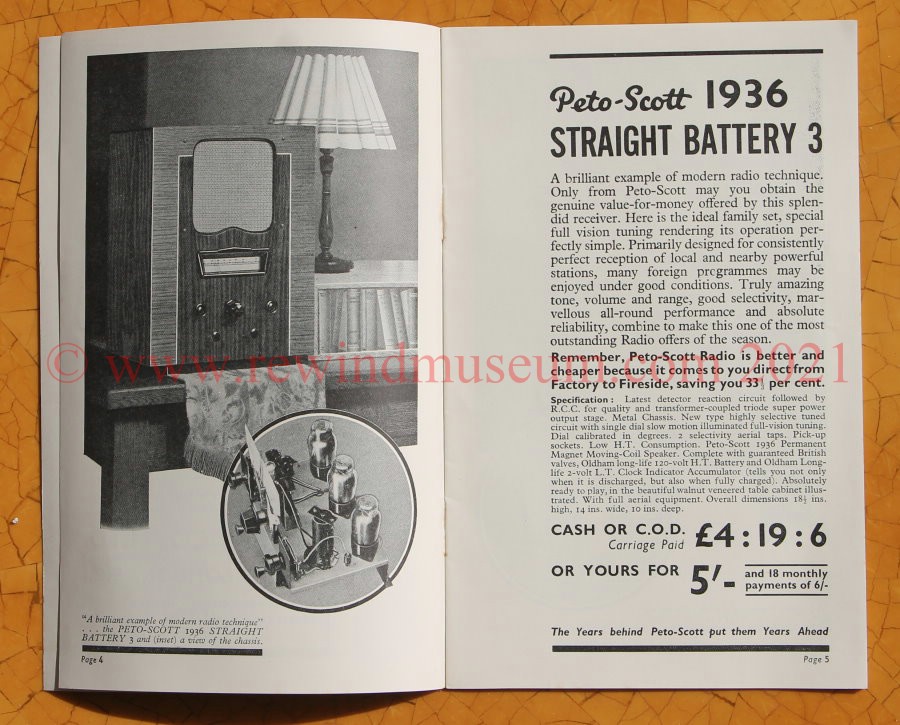
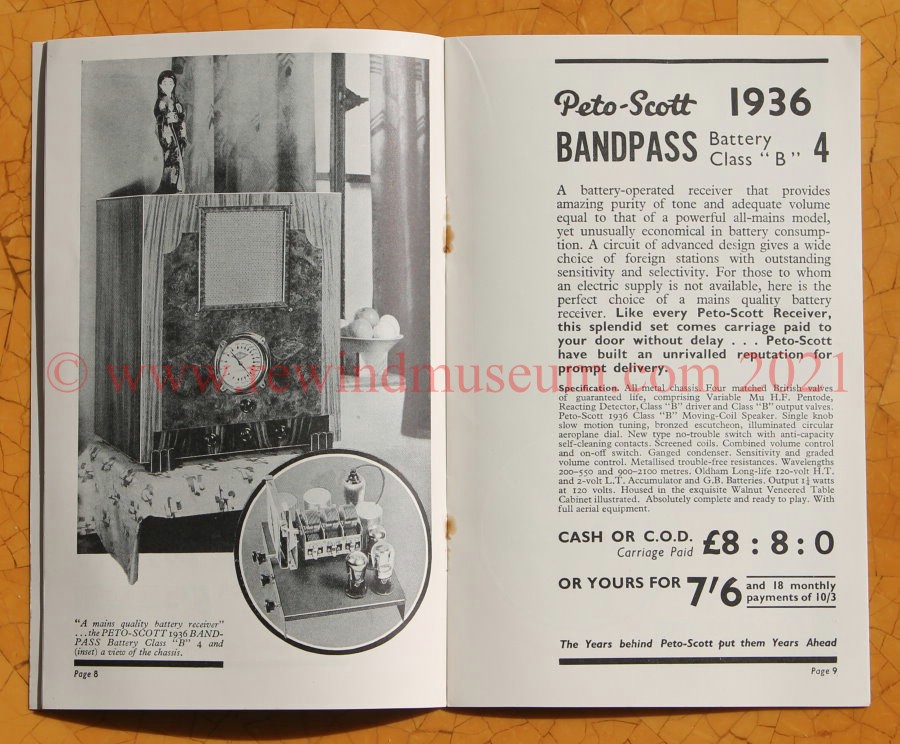
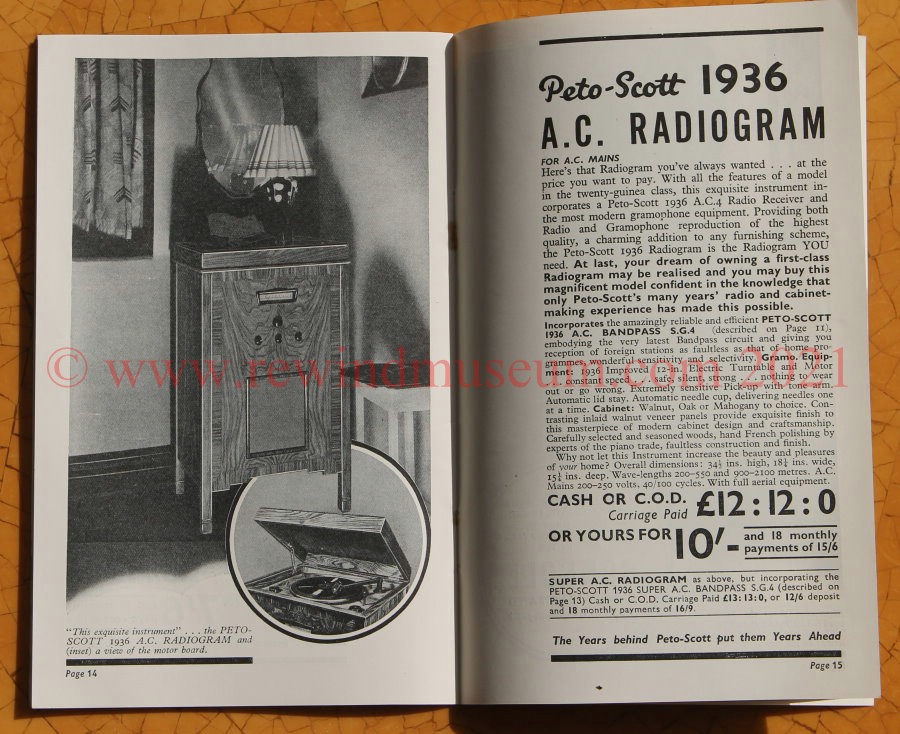
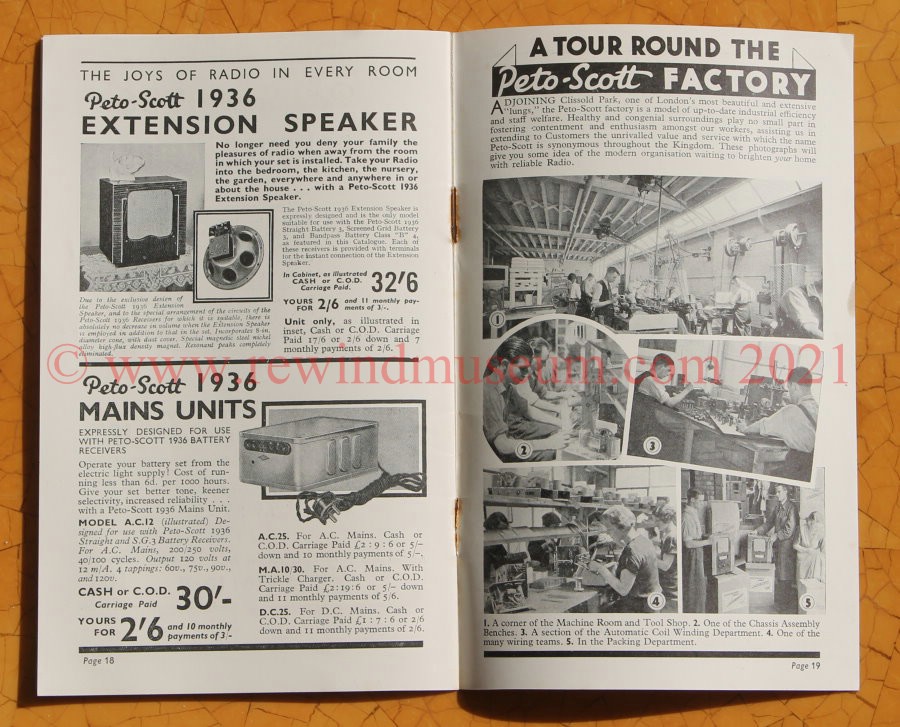
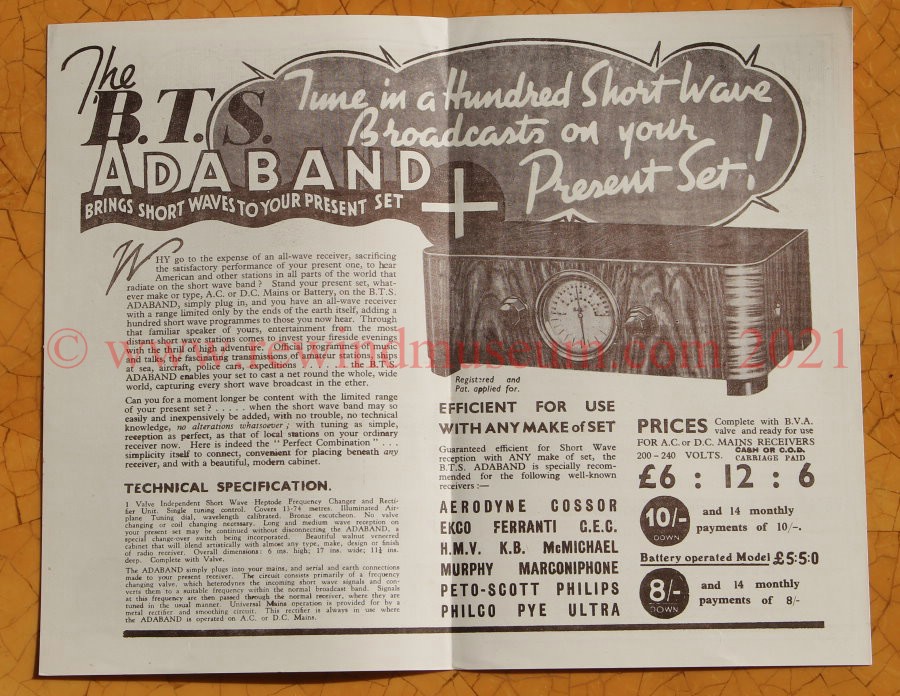
The letter below is interesting as it came with the brochure and it was said to be included in 1936 but there is no date on
the letter, however, the phone numbers in the letter are 4 digit London numbers. My research tells me there was an
STD code in front of 4 digits from 1937 onwards, therfore, this confirms the letter did come with the brochure in 1936.
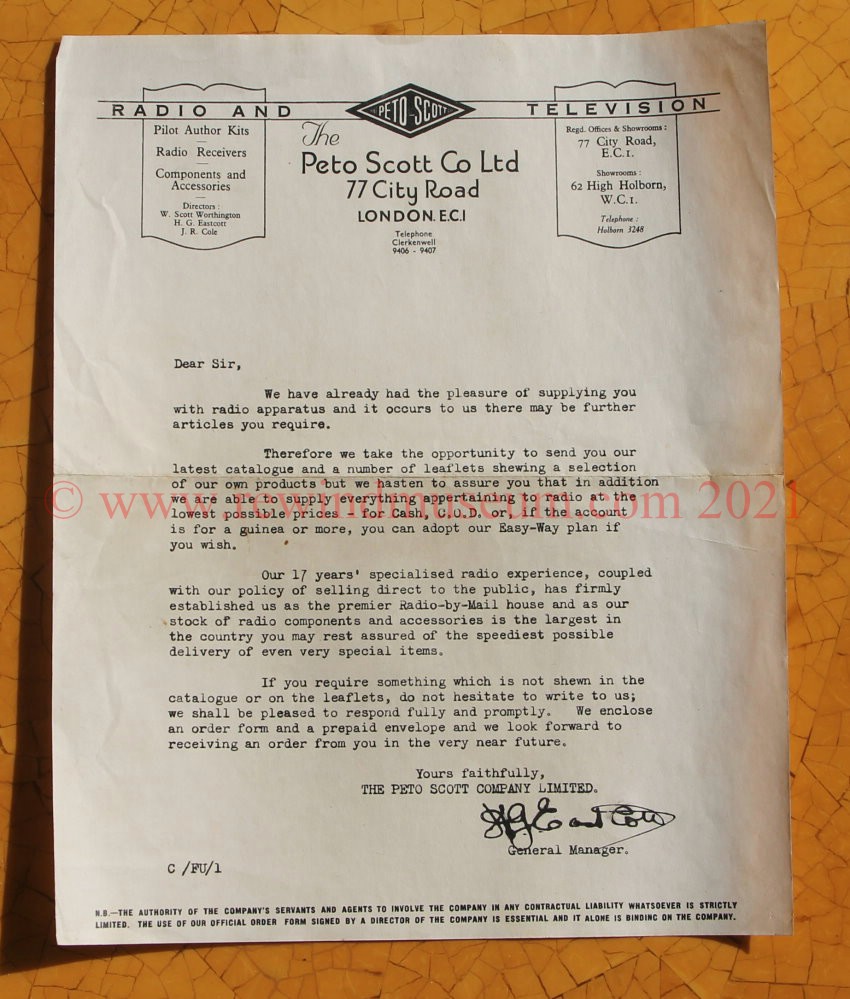
The leaflet below was also donated with the Peto Scott brochure and letter above. It is also from 1936 as it has the same
radio on the front as in the brochure above. Clearly the brochure, letter and this leaflet were all sent to the
customer to offer him more products from the Peto Scott range.
It was good customer after sales contact information detailing new products.
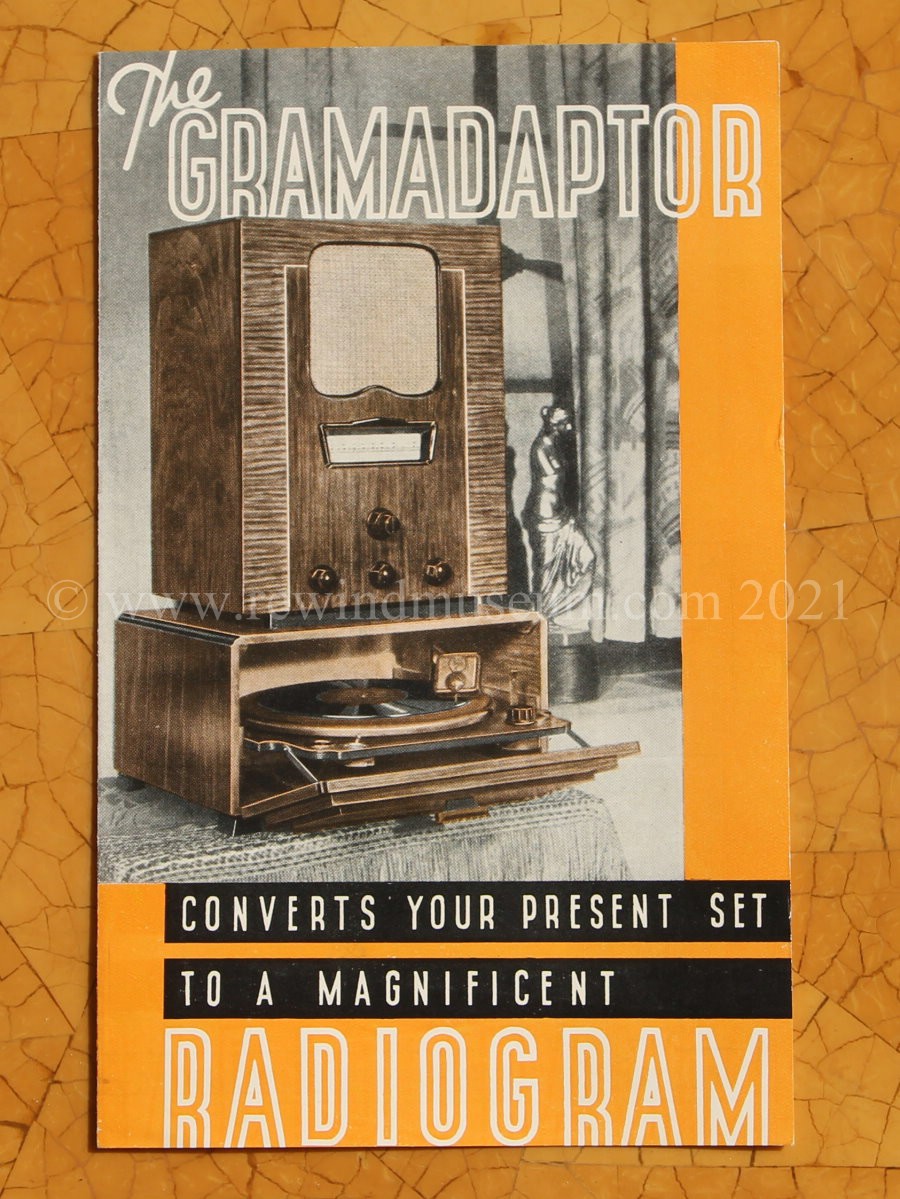
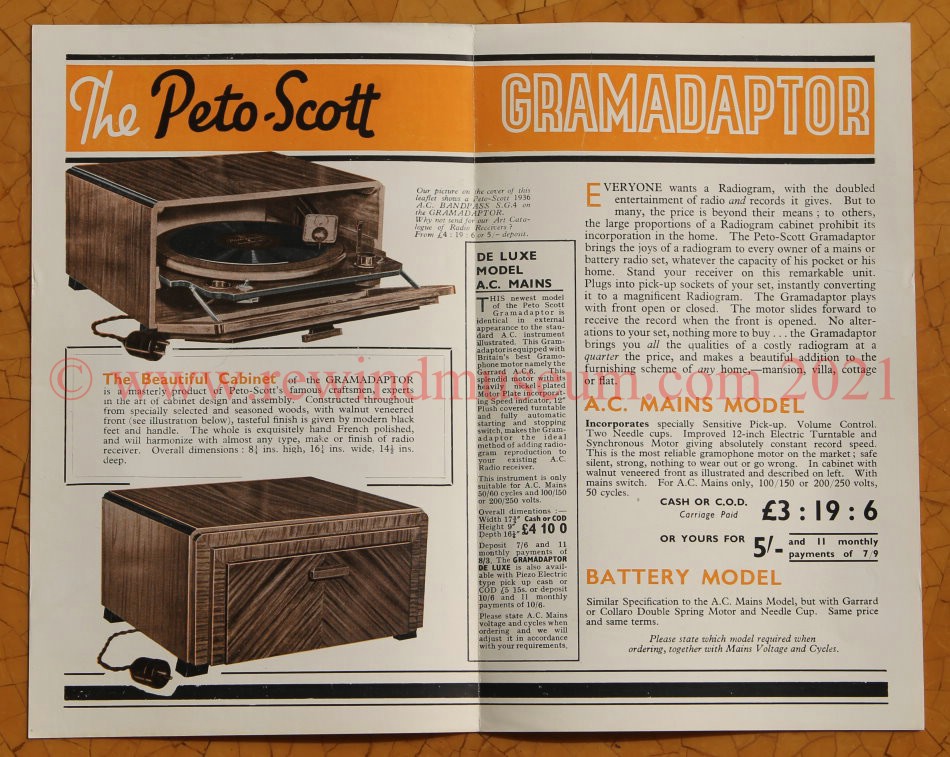


1939. Wireless World. September 1939 (The month WW2 started)
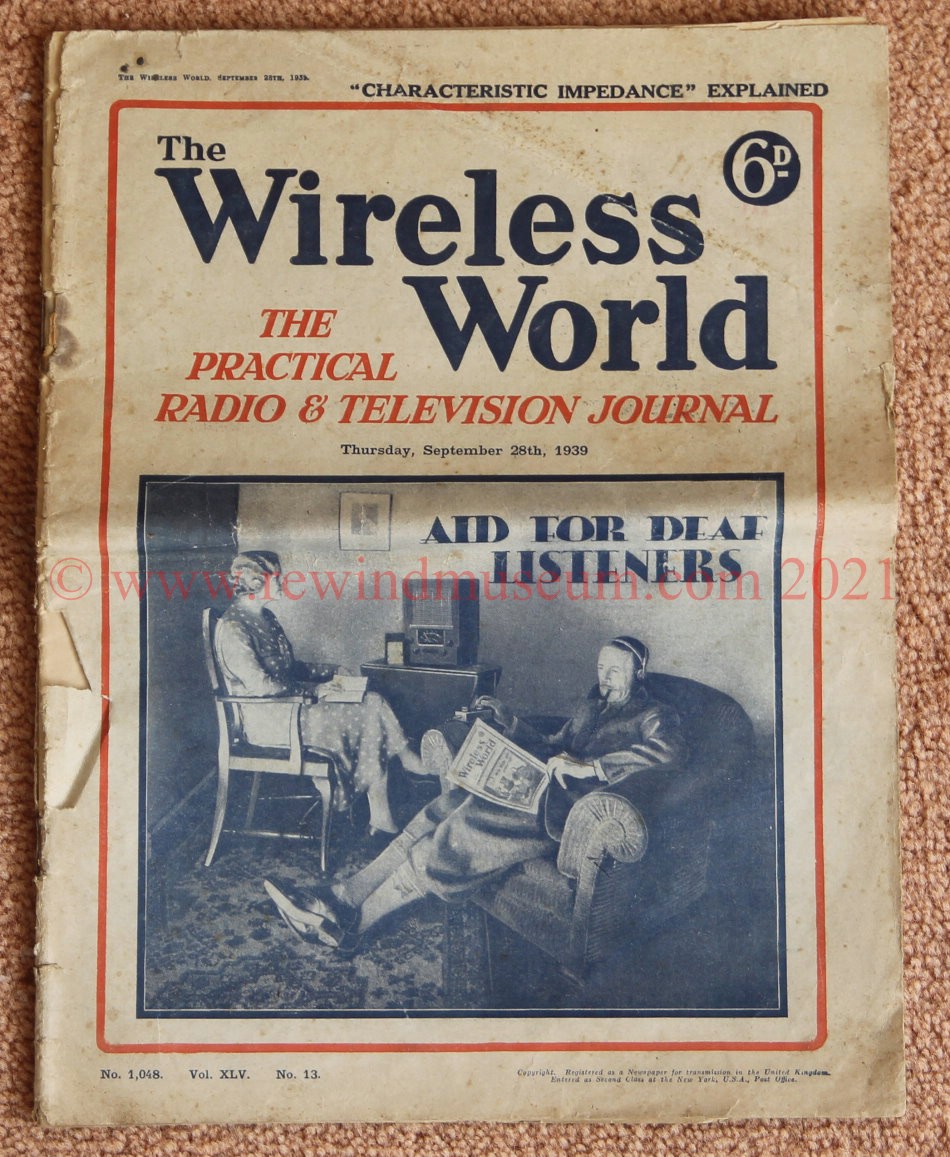
This is really a historic publication. The date of the publication is the 28th September 1939 immediately
after the outbreak of World War 2. Germany invades Poland on the 1st Sept. 1939 and Britain declares war
on Germany on the 3rd Sept 1939. The editorial section below explains why this will be the last ever
weekly edition and why from now on it will be monthly. The editor goes on to explain that many of
his technical staff are now also working for the Defence Services and will have less time to make
contributions to Wireless World. Also note even in Sept. 39, Wireless World was also
"The Practical Radio and Television Journal". The BBC started broadcasting regular
"high-definition" programmes from Alexandra Palace to the London area in 1936
but transmissions were suspended for the duration of the war (1939-1945).
Notice also below "29th Year of Publication" which means publications of Wireless World started in 1910
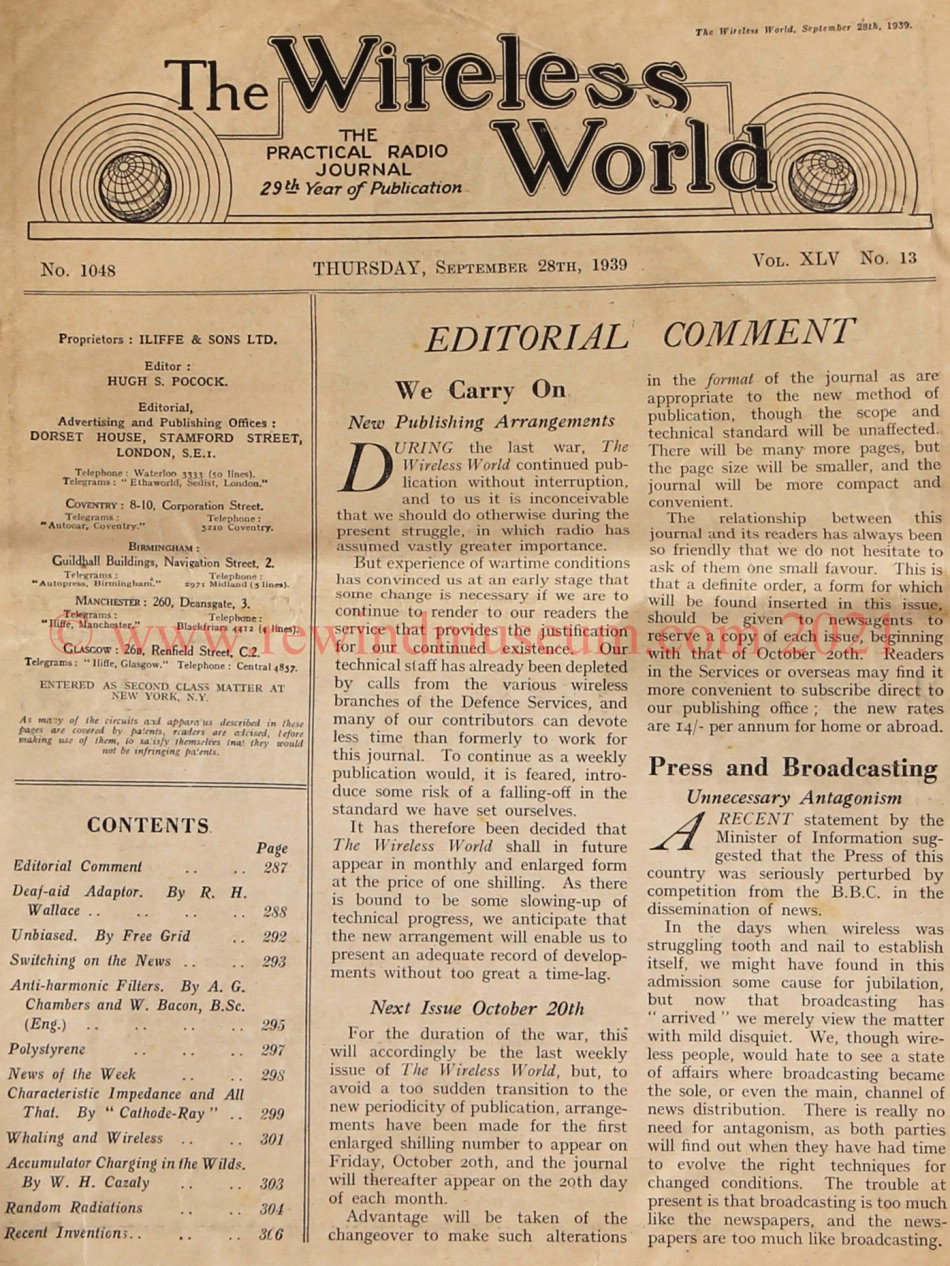
1946. Wireless World. July 1946
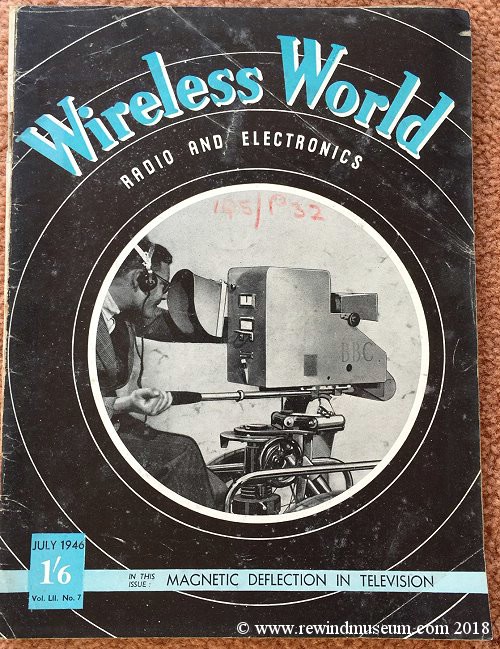
There is an excellent picture of a BBC camera on the front on this magazine.
Wireless World. September 1948
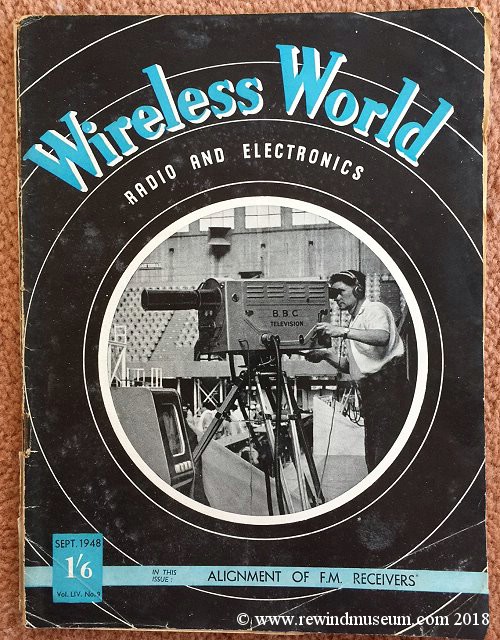
There is an excellent picture of a BBC camera on the front on this magazine.
Practical Wireless magazine. May 1962
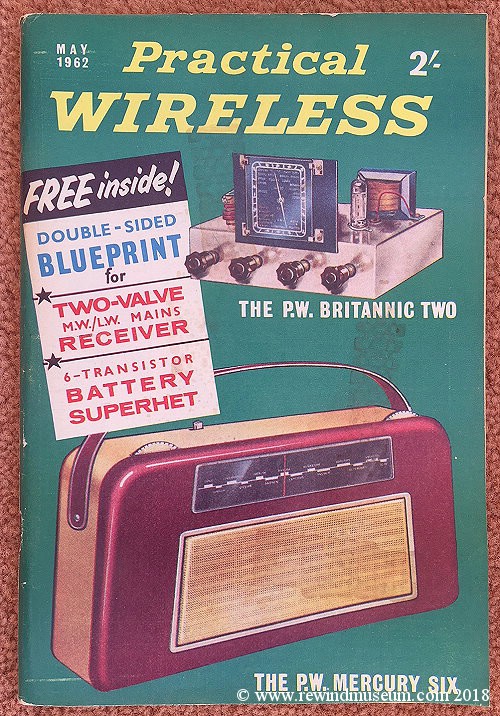
Here in the 1962 edition, there is a valve radio and a transistor radio on the front cover. It is
interesting as at the start of the 1960s valves gave way to transistors in radio sets.
Practical Wireless magazine. March 1963
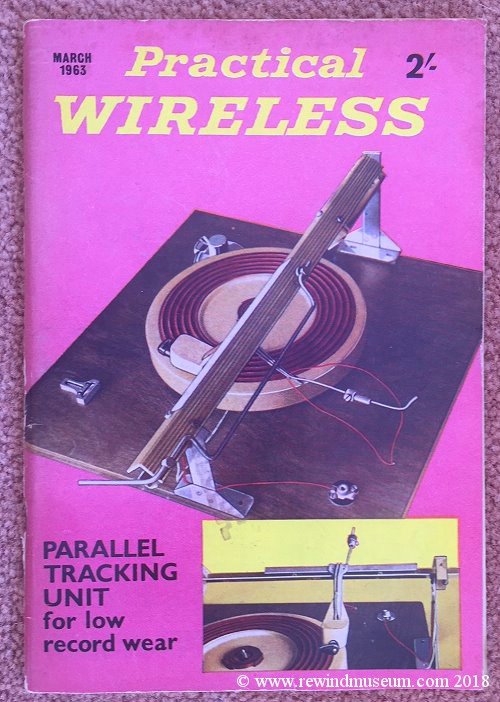
This is an interesting magazine as the main feature details a turntable with parallel tracking.
The idea is to eliminate tracking error due to the tone arm taking a curved patch over the record.
Practical Wireless magazine. July 1965
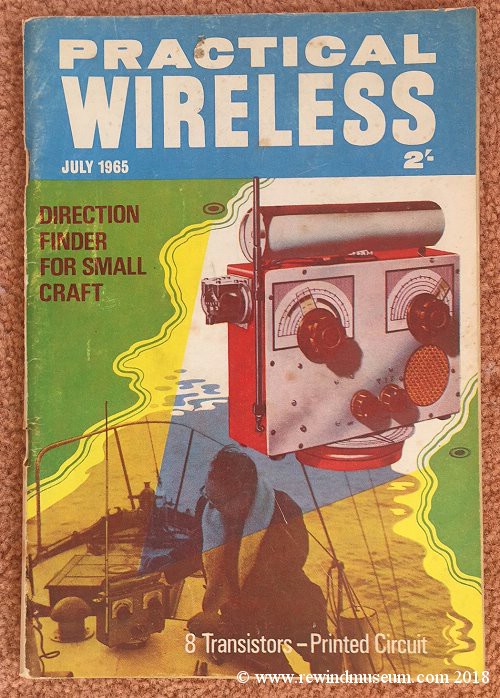
This was not a donation. I bought it in 1965.
Practical Wireless magazine. March 1968
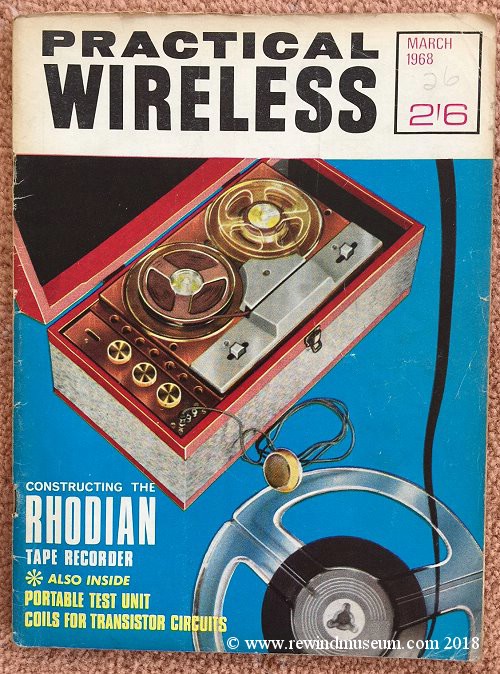
Featuring build your own Rhodian portable tape recorder.
Practical Wireless magazine. May 1968
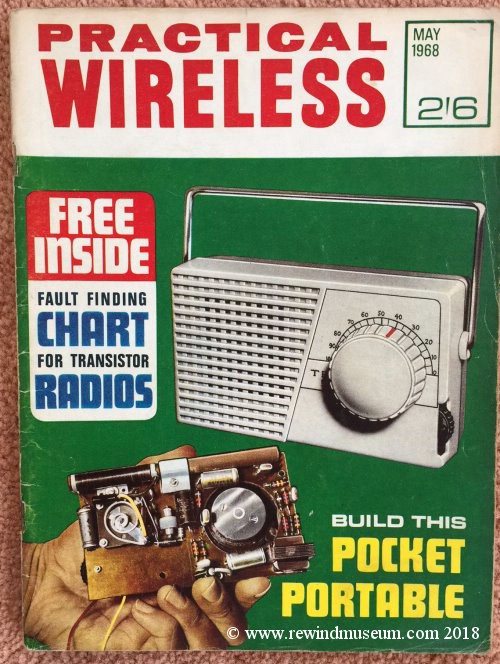
Featuring build your own pocket portable radio.
Practical Wireless magazine. August 1969
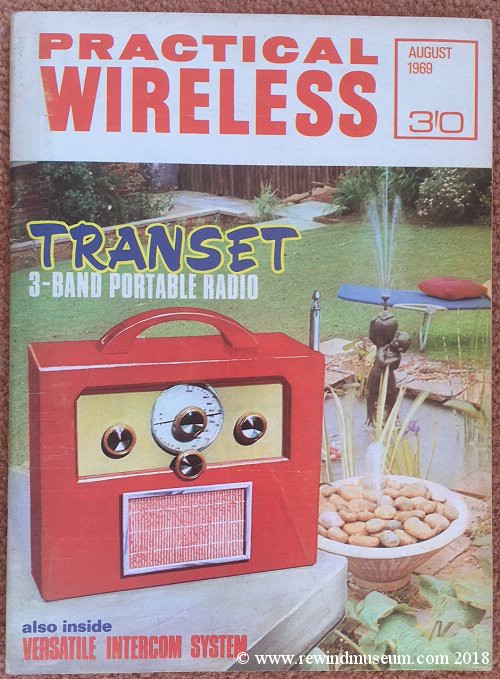
Featuring a 3 band portable radio.
The Radio Constructor magazine. March 1968
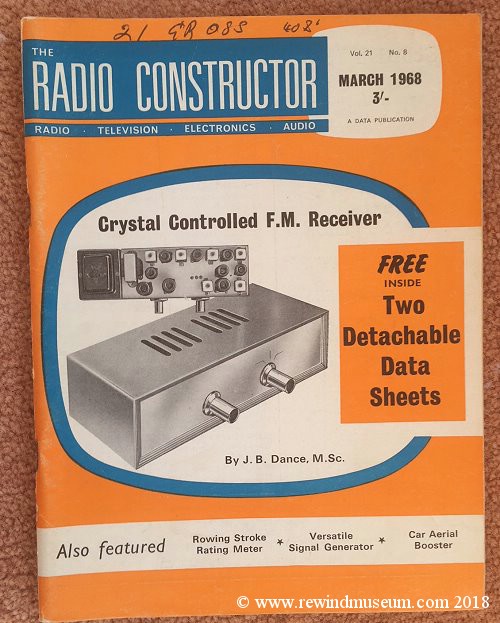
Featuring how to construct an FM radio.
 Making a donation.
Making a donation.
The Rewind Museum is a non-profit making endeavour. The web site and the touring exhibitions are run on
a voluntary basis. Donations,
not money, just old items you no longer want, are always welcome.
If you have something that you think would be of interest, please contact us with the details.
We can send in a courier to pick them up. (Even an international courier). Thank you.
Please note - The Rewind Museum site has been archived by the British
Library so that future generations can always access the site's content.
To talk to us about making a donation please go to - "
making a donation".
Are you interested to read about a 10 year + restoration of a classic vehicle?
If so go to -
www.1952chevytruck.com
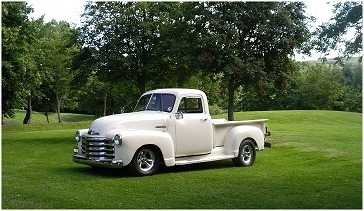 The 1952 The 1952 Chevy truck web site.
The 1952 The 1952 Chevy truck web site.

Web site copyright © 2018 Vision International. All rights reserved.
For all questions & comments about this site's content contact Dave at Rewind Museum.
